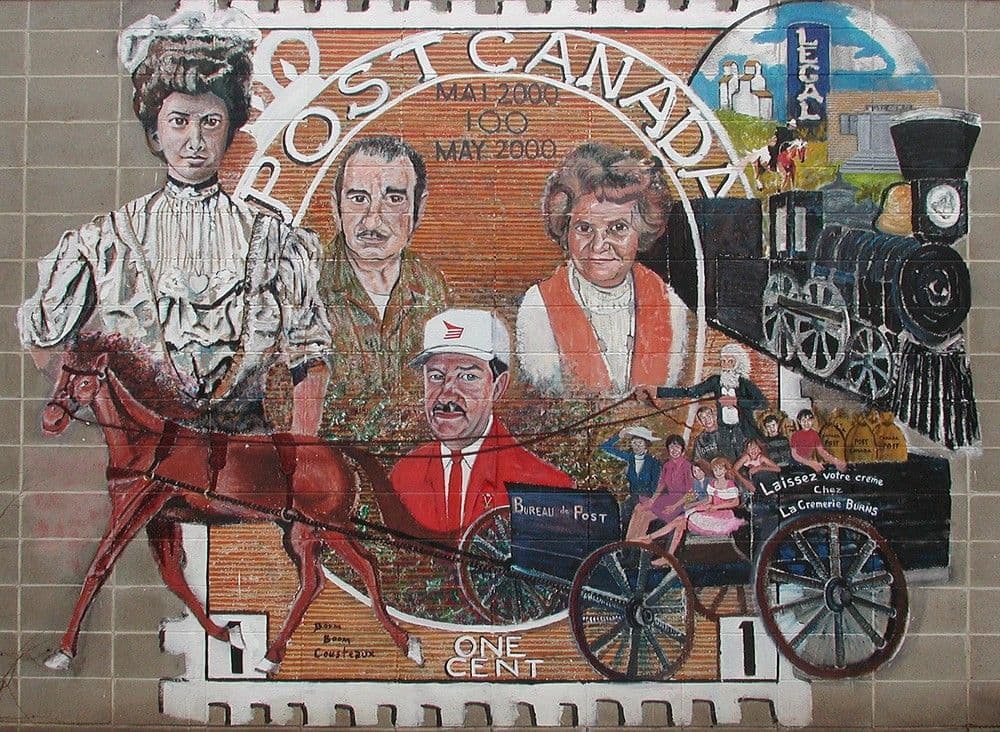Murals of Legal
In 2011, the Town of Legal was recognized as the French Mural Capital of the World. Indeed, there are over 35 murals proudly displayed around Legal, showcasing the history of the region as well as Canada’s history. Use the BaladoDiscovery app to accompany you while you walk through the town’s streets to discover Alberta’s pioneers’ history and the Francophone heritage of the Centralta region, situated North of Edmonton.
Plamondon Museum
The Plamondon Museum brings us to the beginnings of this French speaking and proud community. You’ll find items that belonged to Father Joseph Plamondon and to other pionneer families, including a century-old organ and Plamondon’s first guitar.
Lac La Biche Mission National Historical Site
Established in 1853 – making it one of the oldest communities in Alberta – the Lac La Biche Mission is a beautiful National Historic Site located on the shores of picturesque Lac La Biche lake. This 45-acre site, including several restored historical buildings, numerous displays and an interpretive centre, offers visitors a link to the past through guided tours, all just a short drive away.



